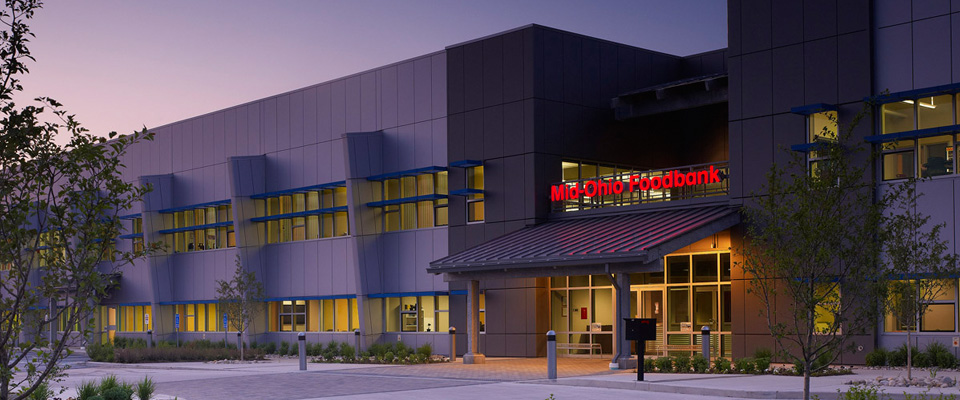|
|
When Mid-Ohio Foodbank hired Rogers Krajnak Architects for their facility expansion project, the organization’s goals went beyond merely increasing their capacity to distribute food. The Foodbank wanted the facility to accommodate twenty years of projected growth; to provide increased logistical efficiency for the handling of food; to increase the capacity to accommodate community volunteer groups; to accommodate programs for nutrition education; to promote an egalitarian, collaborative working environment for staff; and to adhere to rigorous sustainable design and construction practices sufficient for the requirements of LEED Gold level certification by the USGBC.
The renovated facility has tripled the capacity for freezer, cooler and distribution space. The new dry storage racks, freezer, and cooler were located to accommodate the flow of goods from suppliers bringing goods in semi trucks to the refurbished truck docks one side of the building, to the distribution of goods for pickup by agency vehicles at the opposite end. The adjacency of the freezer and cooler to the incoming delivery docks, and a climate controlled Cold Dock allows refrigerated and frozen items to be properly sorted prior to storage and reduces waste and spoilage. The agency pickup area accommodates semi trucks and passenger vehicles underneath the shelter of a new, cantilevered canopy.
The mezzanine accommodates staff offices and conference spaces in a daylight-filled open office environment. In the office areas, RKA minimized the use of drywall stud partitions in favor of glazed storefront – which in combination with office pods custom built from translucent fiberglass, FSC-certified maple, and formaldehyde free MDF, provide the staff with a pleasant open environment, while controlling visual and audible distractions. Adjacent to the existing mezzanine, 12,500 sq. ft. of new mezzanine was constructed to accommodate an outdoor Garden Room terrace, a staff lounge, and shell space for future expansion. A new elevator enclosed in a glass shaft that exposes the machinery within connects the two levels.
The design team was able to salvage 95% of the existing building envelope. A portion of the building’s front façade was removed and replaced with a dry joint insulated metal panel system and glazed aluminum curtain wall with integrated sun controls. The sun controls allow daylight into the building while blocking the direct solar heat gain. Reducing operating costs and waste has allowed the Foodbank to redirect precious resources while serving as a model for both non-profit and distribution industries in Ohio.
|

